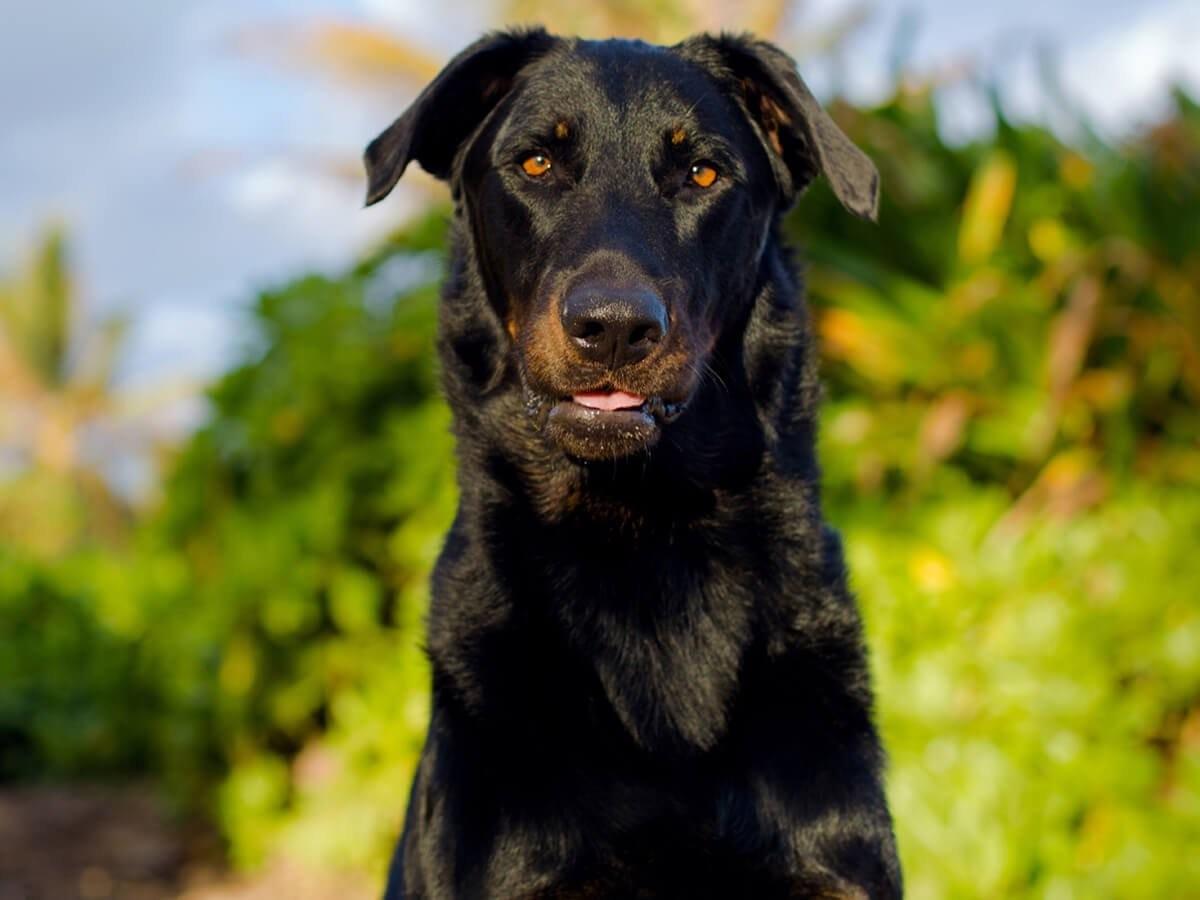
Beauceron
The French breed of the Beauceron has been around since the 1800s and used primarily as a working dog. These smart and loyal companions would make a great addition to any home. They are great guard dogs and friends to their special people.
Breed Profile
Height
24 – 28
Inches
Weight
66 – 100
Pounds
Life Span
8 – 10
Years
Health
health
Canine Hip Dysplasia (CHD)
What is it?
An inherited disorder that painfully affects the dog’s hip joints.
Clinical Signs
CHD can be spotted in a puppy around six months of age. Symptoms include limping, reluctance to move or exercise and lameness in the leg.
Treatment
Proper diet and exercise at a young age can greatly help the dog.
Eligible vet bill
$2,000
*Hypothetical reimbursement examples illustrate reimbursement of an eligible vet bill at the noted reimbursement rate, assuming the annual deductible had already been satisfied and the annual coverage limit has not yet been met. Annual deductible, co-insurance, benefit and coverage limits, and exclusions may apply. Eligibility may vary. Visit https://spotpetinsurance.ca/sample-policy for full terms. For Canada enrollments only, reimbursement rate is based on the pet's age.
Personality
Helpful
With their working dog roots, the Beauceron is always looking to help their owner in any way they can.
Fearless
These courageous dogs are known for being fearless in the face of trial.
Protective
The Beauceron is very loyal to their owner and make for great guard dogs.
Lifetime Care
Coat
The Beauceron sports a double coat. The top layer is a hard coat, and the bottom layer is wooly to help with cold weather.
Typically, the Beauceron is black with tan spots on the chest, face, and legs.
Hypoallergenic
No.
Grooming
The Beauceron doesn’t require much attention beyond regular brushing and grooming habits.
Training
These dogs are eager to please. They are easy to train at a high level.
Beauceron Dog Breed Information
The Beauceron breed comes from Central France. They are known for their black coat with very specifically located tan spots. These spots can be found on the face, above the eyes, twice on either side of the chest, and on the legs. In fact, their French nickname is “Bas Rouge” or Red-Stockings. They also have a trademark thumb with nails called a declaw.
These pups are known for being extremely helpful. Thanks to their working history, they are ready to lend a hand (or paw) to their owners and can be easy to train. Their fearless nature makes them perfect for any adventure. Also, they are very protective and make great guard dogs.
Beauceron Dog: Introduction to the Breed
Introducing any new pet into your home should take a lot of research and thought. Adding a Beauceron dog to your mix can be a dream, but this dream takes a lot of work. Luckily, you’ll be rewarded with a companion that will love and protect you unconditionally. Here are some things you should know before buying a Beauceron puppy.
Beauceron dogs are:
Active
Eager
Suspicious
If you’re looking for a dog to join you on runs, hikes, and adventures, you’ve met your match. The Beauceron is a highly active dog that loves to play. It’s important for you to allow them time to exercise each day. If they don’t get all their energy out, they can become rambunctious.
Thanks to their high intelligence and working backgrounds, the Beauceron is eager to please. Training this breed will be a breeze with any strong and confident owner.
Sometimes these dogs can be suspicious of strangers. However, when you are a Beauceron owner, your dog will take cues from you on how to act. Showing your dog that a stranger is safe, as well as socializing them from a young age will help dispel any suspicion in the dog.
What Are the Origins of the Beauceron Dog?
The Beauceron dog breed originated in central France around the early 1800s. Known for their hard-working temperaments, they were employed all around the country for all sorts of jobs, including herding sheep and cattle. They also guarded against wolves, worked as rescue dogs, messenger dogs, land mine detectors, supply transport dogs and police dogs.
If you think they look strikingly like the Doberman, you’re right! The Beauceron was one breed used in creating the Doberman breed.
They made their grand entrance at the Westminster Kennel Club dog show in 2008.
What are the Risks for the Beauceron Dog?
Although the Beaucerons are generally healthy, no breed is without health problems. One of the main problems the Beauceron breed struggles with is Canine Hip Dysplasia (CHD). This is an inherited disorder that affects the dogs hip joints and can be very painful. Thankfully, many problems the Beauceron faces can be prevented or treated with the proper care.
Other Beauceron health problems may include:
Dilated Cardiomyopathy (DCM)
Eye Problems
Allergies
Gastric Dilation and Bloat
Osteochondrosis Dissecans (OCD)
Thankfully many health problems in dogs can help be prevented with the proper care. Taking the time to avoid issues that can come may save you a lot of time, money, and effort in the future. Two ways you can help prevent illness in your Beauceron pup are working with a responsible and reputable breeder, and keeping up with ongoing care.
The main problem that Beaucerons struggle with, hip dysplasia, is an inherited disease. Working with a responsible and reputable breeder can help give you peace of mind. This is because Beauceron breeders usually test parent dogs for CHD before the breeding process. Don’t be afraid to ask the breeder questions about testing and past litters.
It’s also important to keep up with ongoing care. For the highly active Beauceron, this means more than just regular exercise. Diet, grooming, vaccinations, and medications may also need to play a role in caring for your pet.
Sources:
Beauce.org
Wikipedia


